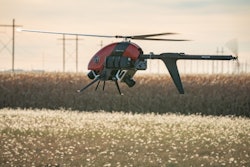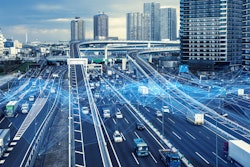
At last month's Groceryshop event in Las Vegas, Coresight Research CEO and founder Deborah Weinswig shared insights from a survey of retailers which showed their chief priorities. Personalization is very important, but it’s proving to be a moving target. Retailers sell so many different products to consumers with changing needs. In the next year, 40% of retailers plan on investing in artificial intelligence (AI), but that’s not necessarily going to help personalization if the human supervisors don’t point the technology in the right direction.
Read Next: Using Social Media to Gauge Growth & Prepare for Product Demands
Personalizing interaction with a physical object is a bigger ask than personalizing an email, but consumers are looking for a personalized experience as they shop. There is a lot of room for AI to fill when it comes to shaping the overall experience, either through gamification or personalizing engagement surrounding the experience, such as engagement with emails or coupons.
The time for this change is not in the future, it is now. This slideshow from CSP Daily News shows a world where data and AI come together to make a grocery shopper’s experience seamless, personalized, and relevant. It almost seems like a single-player video game: you slip into a world of your choosing where you are focused on your grocery shopping goals and nothing else.
AI in retail and CPG
Retail — especially grocery — and CPG are perfect for AI use cases because there are so many items for sale. In addition, there are so many touch points during the supply chain where transparency is needed.
Until recently, both the supply chain and the customer experience have largely been in human hands. Sure, there have been automated and robotic processes, but not ones which self-correct at scale.
For example, how can you figure out which store needs a certain brand of drinks, based on how quickly it had sold in the last 30 days? You can pull up a spreadsheet and search for the SKUs, but you're also figuring out what happened to the shipment with the crackers. How do you predict which stores need which products, and get them off the shelves faster? What about POS? You heard complaints about long lines again.
If you have an e-commerce line, how do you get the best recommendations to meet the needs of thousands of visitors? Modern retail and e-commerce is too much for human hands and eyes.
What AI is good at, of course, is responding to events at scale, as well as optimizing its response based on results. The more data there is train it, the better it will work.
Potential Use Cases:
- Predicting supply chain needs based on sales history, season, weather, consumer trends, etc
- Creating virtual environments, for example virtually grocery shopping from your living room
- Offering visual product search, with websites matching available products to images uploaded by the customer
- Refining pricing strategy by identifying the right offer to make to the right customer at the right time
- AI-powered chatbots to answer customer questions online; or apps to help store assistants with answers
- Predicting consumer behavior, from understanding not only their current but their future needs, as well as risk of churn.
Of course, it's not a matter of investing in some AI and throwing it into the tech stack. An AI strategy, with specific pain-points and/or outcomes in mind, is the place to start.
One particular pain point where AI will help is getting goods off the shelf. From the warehouses to the grocery shelf, it’s almost impossible to know through an analog process.
Read Next: Grocers Face Challenges Serving Online Demand
With AI, according to Weiswig, it was able to help warehouses continue to automate. Warehouse automation can move 50 items in 6 minutes, as opposed to 30 minutes per human. This means less risk for injured workers and faster fulfillment times. As for humans looking for a specific product, technology can help locate a product in mere seconds, instead of wasting time wandering around the store.

What else can AI do?
Increasing efficiency is not the only purpose of AI, though. Loss prevention, security and personalization are components that AI can provide enormous amounts of value. Instead of hiring security personnel, spending hours combing through footage and guessing how much merchandise is missing, AI can help manage all of this.
Grocery stores in China and Japan are already experimenting with this. From using hand prints to check out to recognizing suspicious poses for would-be thieves to stop shoplifting, AI is not only making grocery shopping more efficient, it is making it more secure in store and in the supply chain.
SCORE-ing big
Weinswig debuted Coresight's proprietary SCORE framework, to help retailers (and initially grocery retailers) to configure their AI strategy.
SCORE is an acronym, broken down this way:
- S -smarter customer engagement
- C -communication
- O - operational efficiency
- R - removing friction
- E - e-commerce/Omnichannel
This isn’t the typical awareness and decision funnel that most marketers and salespeople are familiar with. The SCORE model is a new methodology and guide for retailers to re-examine how they can interact better with their customers with the help of AI. Indeed, the elements of SCORE should be imagined in rotation, so that the last element feeds into the first
The customer journey is key
“If you think about how AI can best serve your business, it’s really sales and anticipating demand,” says Weinswig.
This is a unique challenge that AI is equipped to help with, because AI can tell you which products are selling fastest in which stores, and which customers are buying them.
The rest is up to the retailer and, by extension, the food salesperson. Once you have successfully narrowed down which customers are buying what, how do you reach them faster? How do you evaporate their pain points and shorten their journeys? All these questions are important for creating a food experience that resonates with the customer, building a sense of trust and loyalty with them so that they will return to your grocery store again and again.

















